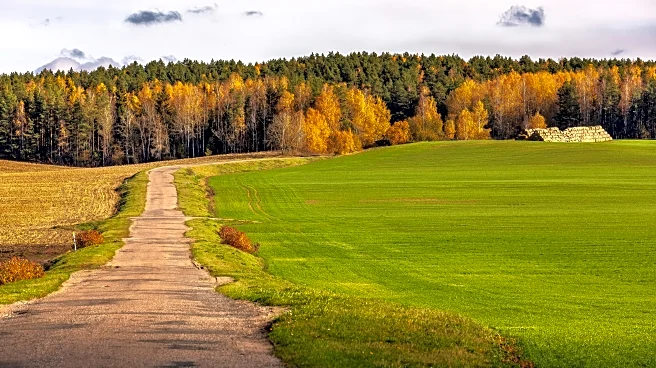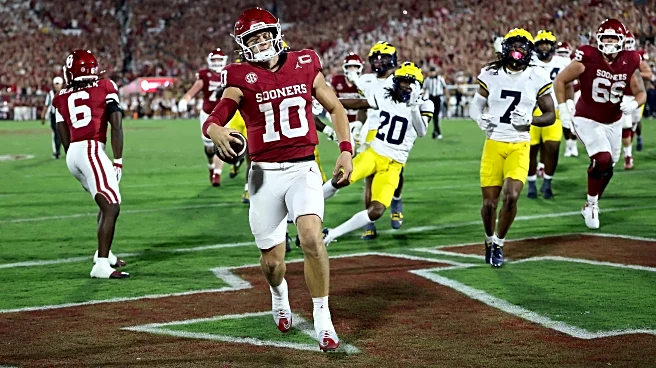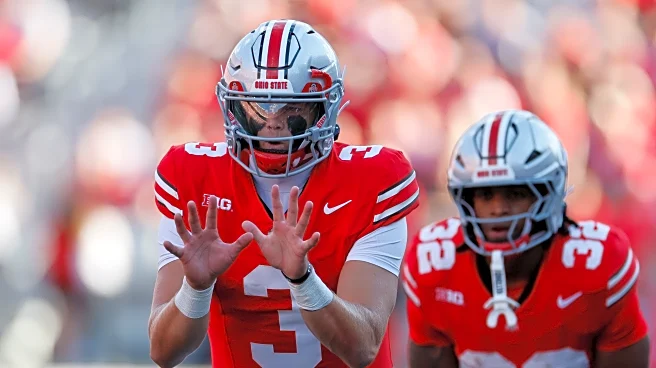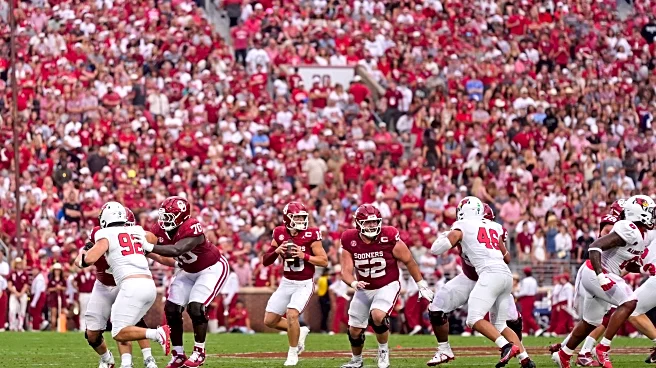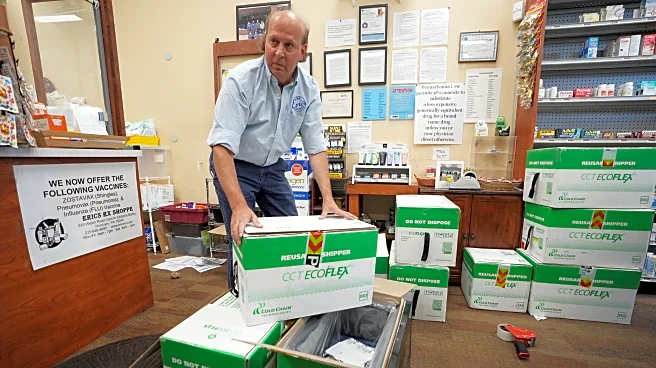What's Happening?
The pawpaw, North America's largest edible native fruit, is celebrated for its unique taste and cultural significance. As autumn arrives, the pawpaw's custard-like flesh and floral aroma become a staple for those familiar with its heritage. Historically enjoyed by Native Americans, early settlers, and some Founding Fathers, the pawpaw is often consumed fresh or used in various recipes, including cakes, cookies, and smoothies. Despite its rich history, many people remain unaware of the pawpaw, even in regions where it grows naturally. The fruit's skin is toxic, and it should not be eaten unripe. The pawpaw is associated with a slower-paced, thoughtful America, contrasting with today's fast-paced digital world.
Why It's Important?
The pawpaw represents a connection to America's past, offering a reminder of simpler times and traditional values. As modern society becomes increasingly digitalized, the pawpaw serves as a symbol of the importance of preserving cultural heritage and natural foods. Its celebration in festivals, such as the Pawpaw Festival in Illinois, highlights the fruit's role in community bonding and cultural preservation. The pawpaw's resurgence in popularity could encourage more people to explore native fruits and sustainable agriculture, promoting biodiversity and local food systems.
What's Next?
The Pawpaw Festival in Paw Paw, Illinois, scheduled for September 20, aims to increase awareness and appreciation of the fruit. As interest in local and native foods grows, more festivals and events may emerge, celebrating the pawpaw and other indigenous fruits. This could lead to increased cultivation and consumption, supporting local farmers and communities. Additionally, educational initiatives may arise to inform the public about the pawpaw's history and culinary uses.
Beyond the Headlines
The pawpaw's revival could spark discussions on the importance of preserving native species and traditional agricultural practices. It may also inspire a broader movement towards reconnecting with nature and valuing the land, countering the trend of urbanization and technological reliance. The pawpaw's story is a reminder of the cultural and ecological richness that can be found in America's natural landscape.


